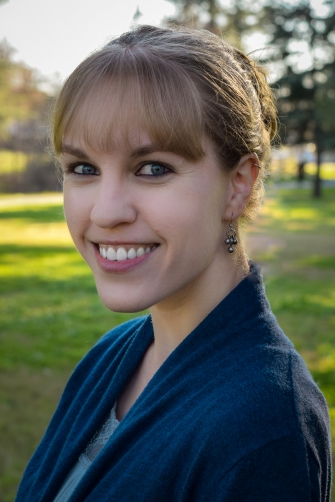If you read my article on the 7 Types of OCD, you’re already aware that OCD can come in many different forms.
One type of OCD that you may have heard floating around is called “Pure O” OCD (or “Pure Obsessional” OCD). The implication being that those with “Pure O” OCD have obsessions without any compulsions.
While those with “Pure O” may not have the visible behaviors (such as washing or checking) that typically characterize OCD compulsions, the name itself is a misnomer.
Keep reading to find out why.
Table of Contents
Invisible Compulsions
“Pure O” OCD is a form of obsessive-compulsive disorder that is characterized by obsessions and compulsions that are primarily mental in nature.
Unlike other forms of OCD, which often involve compulsions that can be observed as visible actions, “Pure O” OCD is focused on internal thoughts and mental rituals.
As with OCD in general, those with “Pure O” OCD may have obsessions related to a wide range of topics, including religion, sexuality, violence, and contamination. These obsessions can be extremely distressing and can interfere with daily life.
The common confusion around “Pure O” OCD is right in the name. There is a misunderstanding that those with “Pure O” don’t actually do compulsions, when in reality this is false. Rather, the compulsions associated with “Pure O” are mental actions, and therefore essentially invisible.
For example, a person with “Pure O” OCD may have recurrent thoughts about committing a crime or being contaminated by germs, and may engage in mental compulsions such as repeating phrases or counting to try to alleviate these thoughts.
Just like physical compulsions, mental compulsions are done with the goals of reducing anxiety or distress, decreasing uncertainty, preventing something unwanted from happening, avoiding uncomfortable thoughts or emotions, or to attain a “just right” feeling.

What Mental Compulsions Look Like
Just as physical compulsions can come in many different forms, mental compulsions can also look very different, depending on the person. Here is a list of some of the most common mental compulsions.
Common mental compulsions include:
- Mental Chanting: Saying specific words, numbers, or phrases in your mind
- Counting: Counting words, letters, numbers, objects, etc. in your mind
- List Making: Mentally repeating or making lists of items or categories
- Neutralizing: Replacing an unwanted thought with a different image, word, phrase, etc.
- Praying: Repeatedly and compulsively praying, typically in a specific way (note that this is not the same as prayer as part of a spiritual practice)
- Mentally Checking: Examining thoughts, emotions, reactions, behaviors, etc. in the moment
- Body Scanning: Mentally checking for certain sensations, pains, feelings, etc. in the body
- Mentally Reviewing: Examining situations from the past to check that something unwanted didn’t happen, to check for accuracy of memory, or to determine meaning
- Mentally Rehearsing: Preparing compulsively for possible future scenarios (expected or otherwise)
- “Figuring Out:” Trying to figure out the meaning of specific thoughts, images, sensations, emotions, etc. OR Trying to figure out life problems or existential concerns that are unresolvable
- Theorizing: Hypothesizing about theoretical events and potential “What if…?” scenarios
- Rationalizing: Repeatedly reviewing rational ways of looking at an obsession to try to justify letting it go
- Self-Reassurance: Repeating reassuring statements (such as, “It’s all going to be okay.”) or positive affirmations in a ritualized way
- Fantasizing: Repeatedly imagining that all of your symptoms and problems magically disappear
- Compulsive Flooding or Mental Testing: Reassuring yourself that your obsessions are actually OCD by intentionally flooding yourself with the unwanted thoughts and testing for anxiety or another painful reaction
- Self-Punishment: Criticizing yourself in response to intrusive thoughts in order to prove that they are unwanted and that you feel “appropriately” guilty
- Memory Hoarding: Carefully saving memories or information in case you need to remember them later
- Ruminating: Rehashing a resolved concept to re-process and confirm it is actually resolved
If you’d like to download a free printable list of these mental compulsions click here.
Note that many of these are mental actions that we have all taken at some point. What defines them as compulsions is the motivation behind them, as well as the destructive pattern that they are a part of.
While we are talking about mental compulsions in relation to “Pure O” OCD, note that most individuals with physical compulsions also engage in mental compulsions to some extent.
As a therapist who has worked with hundreds of individuals with OCD, it is very rare that someone with OCD does not have any mental compulsions.

Other “Invisible” Compulsions
One other major way that those with “Pure O” OCD may try to manage their anxiety is through avoidance of triggers. While avoidance is not a compulsion per se, it can absolutely feed into anxiety and OCD and make the condition worse over time.
Though less “invisible” than mental compulsions and avoidance, another compulsion worth mentioning in relation to “Pure O” OCD is seeking reassurance from others (i.e., “It’s all going to be okay, right?”). This is a frequent symptom of OCD that is often overlooked.
It is important to note that “Pure O” OCD can be just as debilitating as OCD with more “traditional” physical compulsions. Those that suffer from this type of OCD may spend hours a day stuck in endless loops that prevent them from fully participating in their life.
Getting Help for “Pure O” OCD
It is common for people with “Pure O” OCD to feel ashamed and embarrassed about their thoughts, and they may be hesitant to talk about them with others.
This can make it difficult to diagnose, as they usually don’t exhibit the typical behaviors associated with OCD that cue providers to look for the disorder. Many people with “Pure O” OCD may go undiagnosed or may be misdiagnosed with other mental health conditions.
Treatment for “Pure O” OCD, like other forms of OCD, typically involves therapy and possibly medication.
As with all types of OCD, you will want to find a therapist who is familiar with Exposure and Response Prevention (ERP), Acceptance and Commitment Therapy (ACT), or another treatment that has been found to be effective.
In addition, medication can potentially make it easier to participate in treatment and “turn down the volume” of your intrusive thoughts. If you are interested in finding out more, I encourage you to seek out a psychiatrist who specializes in OCD.

If you are experiencing “Pure O” OCD, know that you are not alone and that you can get better!
As a reminder, this blog post is not intended as professional counseling or clinical advice. This article is meant to provide you with some helpful information about “Pure O” OCD. If you are struggling with your mental health, I encourage you to consider reaching out for additional support, professional or otherwise.

-Kristel Roper, LMFT, LPCC
Kristel Roper is a licensed psychotherapist offering therapy services to individuals in the Sacramento area. She specializes in therapy for anxiety and OCD and especially enjoys working with young adults as they navigate the challenges of college, career, and beyond. If you have a question for Kristel or are interested in therapy for yourself or your loved one, feel free to reach out.
Photo by andrew kim on Pixabay
Photo by Timothy Eberly on Unsplash
